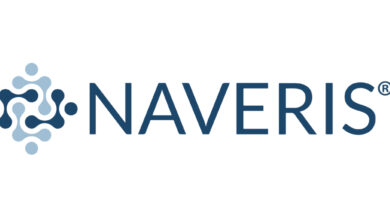Global Diabetic Nephropathy Disease Analysis/Market Report 2021 – ResearchAndMarkets.com

DUBLIN–(BUSINESS WIRE)–The “Disease Analysis: Diabetic Nephropathy” report has been added to ResearchAndMarkets.com’s offering.
Diabetic nephropathy, also known as diabetic kidney disease, is caused by damage to small blood vessels which can cause the kidneys to be less efficient in their blood filtration role or to fail altogether. The disease is a clinical syndrome characterized by albuminuria, decline in glomerular filtration rate, and elevated arterial blood pressure. Up to 50% of diabetics with a disease duration of over 20 years have diabetic nephropathy.
Latest Key Takeaways
- The publisher estimates that in 2018, there were approximately 122.6 million prevalent cases of diabetic nephropathy (DN) in adults aged 20 years and older with type 2 diabetes worldwide, and forecasts that number to increase to 138.2 million prevalent cases by 2027, driven by population demographics. Approximately 30% of diagnosed diabetics are also diagnosed with DN. However, screening practices differ among countries and local health systems, which can impact patients identified for treatment.
- The DN market is complex, because in addition to specific mechanisms that directly impact the disease, blood pressure and glycemic control are additional general targets that affect the condition. Moreover, there is high CV risk in DN patients, and many physicians may be more concerned about that than the risk for end-stage renal disease, especially in less advanced patients. Hence, drugs that directly impact DN and also benefit these other targets or have a CV benefit can have a competitive advantage.
- The antihypertensive ACE inhibitors or ARBs are the mainstay of treatment currently for type 1 and type 2 DN, as they have renal benefits beyond blood pressure lowering. Usage increases at higher renal stages (indicating greater renal impairment), though it may decline in stage 4 due to concerns about complications of hyperkalemia or deterioration of renal function in more advanced patients. Patients may also be receiving these medications for hypertension, which is present in most patients with DN, or other CV indications, without a specific intention of treating DN.
- The antidiabetic SGLT-2 inhibitors are already used in some DN patients to treat their diabetes, albeit they are hampered by some side effects, but are poised to expand further, with additional approvals specifically for type 2 DN, as well as in CKD without diabetes and with the co-morbidity of heart failure (HF). They have a number of benefits in addition to renoprotective and antidiabetic effects, including blood pressure lowering, reducing co-morbid CV risk – especially heart failure (HF), but also, in some situations, CV death or MACE – weight loss, and a low risk of hypoglycemia. Their antidiabetic effects start to wane in stage 3 renal impairment, however, even though renal and CV benefits may persist further, raising the dilemma for physicians whether to instead then use other antidiabetics with stronger antiglycemic effects, such as the GLP-1 agonists, which also have CV and possibly renal benefits. Invokana was the first SGLT-2 inhibitor with a type 2 DN indication, but is unlikely to be able to capitalize much on it due to concerns about a possible increased risk of amputations. Farxiga is likely to be approved based on stellar results from a CKD trial that included both diabetics and non-diabetics, and Jardiance should have pivotal results in both by 2022. Jardiance has been the class leader generally in diabetes due to a large reduction in CV death in its CVOT, but curiously in data from a pivotal HFrEF trial, presented in August 2020, it did not show much benefit on CV death, unlike Farxiga, which gained approval in HF in 2019. While Jardiance is likely to still be approved in HF based on its benefit on hospitalization for HF (HHF), physicians could start to think more that there really is not much difference on efficacy between members of the class, just differences in the trials, though that does not appear to have had much impact on Jardiance’s success yet. Both Farxiga and Jardiance have ongoing trials in HFpEF, for which there currently are no approved treatments, but expectations are muted given how difficult the condition has been to treat. Loss of exclusivity for the class starts in 2025.
- The overall likelihood of approval of a Phase I DN asset is 4%, and the average probability a drug advances from Phase III is 33.3%, though the sample for the latter is limited. DN drugs, on average, take 12.0 years from Phase I to approval, compared to 9.6 years in the overall endocrine space.
Key Topics Covered:
OVERVIEW
- Latest key takeaways
DISEASE BACKGROUND
- Definition and diagnosis
- Risk factors
- Etiology/pathogenesis
- Stages and prognosis
- Patient segmentation
- CV co-morbidities
TREATMENT
- Major treatment guidelines
- Prescribing trends – screening and antihypertensives
- Prescribing trends – antidiabetics
- Treatment setting
EPIDEMIOLOGY
- Prevalence methodology
MARKETED DRUGS
PIPELINE DRUGS
KEY REGULATORY EVENTS
- Bayer Finerenone could Face Review Issue in Hyperkalemia Risk
- EC Approves Extended Invokana Indication on Renal Outcomes in DKD
PROBABILITY OF SUCCESS
CLINICAL TRIAL LANDSCAPE
- Sponsors by status
- Sponsors by phase
- Recent events
DRUG ASSESSMENT MODEL
- Generically available ACE inhibitors and ARBs
- SGLT-2 inhibitors
- Other classes
MARKET DYNAMICS
FUTURE TRENDS
CONSENSUS FORECASTS
RECENT EVENTS AND ANALYST OPINION
- Finerenone for Diabetic Nephropathy (October 23, 2020)
- DMX-200 for Diabetic Nephropathy (September 14, 2020)
- Farxiga for Diabetic Nephropathy (August 30, 2020)
- Farxiga for Diabetic Nephropathy (July 28, 2020)
- Finerenone for Diabetic Nephropathy (July 9, 2020)
- TMX-049 for Diabetic Nephropathy (June 13, 2020)
- Farxiga for Diabetic Nephropathy (March 30, 2020)
- RDEA3170 for Diabetic Nephropathy (November 9, 2019)
- Esaxerenone for Diabetic Nephropathy (November 7, 2019)
- Praliciguat for Diabetic Nephropathy (October 30, 2019)
KEY UPCOMING EVENTS
KEY OPINION LEADER INSIGHTS
UNMET NEEDS
BIBLIOGRAPHY
- Prescription information
APPENDIX
For more information about this report visit https://www.researchandmarkets.com/r/vxtle7
Contacts
ResearchAndMarkets.com
Laura Wood, Senior Press Manager
[email protected]
For E.S.T Office Hours Call 1-917-300-0470
For U.S./CAN Toll Free Call 1-800-526-8630
For GMT Office Hours Call +353-1-416-8900



